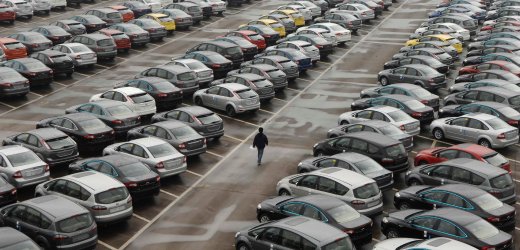China’s government plans to have a new logistics system in place by 2020, by which time it forecasts industry growth in the sector will be 8% and will account for 7.5% of the country’s GDP. At the same time the government said logistics costs will be reduced by 16% against that GDP figure.
This compares with data quoted by the government from the China Federation of Logistics and Purchasing (CFLP), which shows that following an average annual increase of more than 20% over the past decade, logistics growth has slowed along with the rest of the economy. Combined goods value grew 8.6% year-on-year in the first quarter. The plan is now to focus on slower and more sustainable growth.
Cost reductions will be achieved by establishing an “open, competitive and orderly national logistics market,” according to the government, and there will be an emphasis on encouraging mergers and acquisitions along with other forms of collaboration. Efforts will also be made to strengthen logistics infrastructure networks, including an integrated transport system, a comprehensive transport corridor, and transport hubs supporting greater multimodal options.
There are seven measures outlined under the six-year logistics development plan, all of which are expected to contribute to overall improvements in automotive logistics.
According to Gopal R, global vice president of transportation and logistics practice at analyst firm Frost & Sullivan, the benefits for automotive logistics in the country are multi-faceted and include development of 3PL players and modern logistics, along with an improved flow in the supply chain based on a stronger foundation of information.
The development of 3PLs includes an incentive for logistics companies to merge and form larger entities. That process is already underway, as was revealed earlier this year at the Automotive Logistics China conference in Beijing.
Also among the proposals, is a reduction of toll fees and better integration between transport modes, including rail and port operators, as well as between transport and warehousing operators.
“[T]he targeted development of logistics technology for the automobile sector [and] improved logistics quality to follow international standards are expected to contribute to overall improvements in automotive logistics,” said Gopal.
Seven-point plan
The comprehensive plan for logistics in China includes a focus on raising the level of professionalism across the industry, which involves a greater emphasis on outsourcing and the development of 3PLs. It also calls for stimulus for innovation and customised services.
In terms of improved information flow, the new plan calls for a better use of GPS, cloud computing and advanced information systems that can tackle ‘big data’, which refers to large and complex data sets that are difficult to process using traditional applications.
The government also calls for stronger research and the widespread adoption of key technologies, as well as an international standardisation on logistics practice. This is important given the regional developments underway in the country as manufacturing expands west and the government has stressed the need for coordination across the regions, with the establishment of logistics nodes to facilitate it. As detailed by Frost & Sullivan there is a drive underway to develop the Silk Road Economic Zone, the Maritime Silk Road, the Yangtze River Economic Belt and other key logistics areas.
More generally, the government has said it will be developing infrastructure across China including rail, airports, road networks, hubs and ports. In terms of port developments, the State Council has approved plans to double the size of the port of Tianjin, raising the number of berths to more than 70. The ports quay length will double to 148kms according to state news agency Xinhua.
Those developments also include improvements to cross border logistics systems and regional corridors.

Finally there is a renewed emphasis on environmental considerations, including more recycling, more resources to rail and waterways targeted, and more energy conservation.
The plan also seeks to connect traditional manufacturing with new opportunities brought by e-commerce. E-commerce is playing an increasingly important role in logistics developments in China.
All this of course relies on a marked increase in investment in assets, not only in terms of infrastructure but also in the orders for equipment required to move inbound parts and outbound vehicles around the country. The current backlog in orders for that equipment attests to the rate of increase in the logistics industry in China.
“Reference to logistics cost as a percentage of GDP as a goal in the logistics development plan indicates the government’s intent to address the concern of increasing costs,” said Gopal. “It is anticipated that logistics cost as a percentage of GDP would be brought to 16% by 2020, through the various measures planned in the logistics development plan.”


































